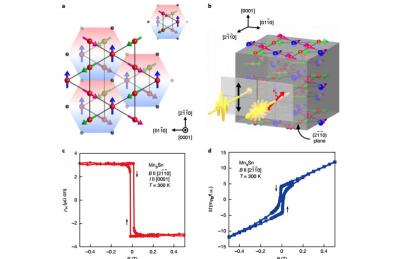Researchers from the NIST in the US and the University of Tokyo have discovered a metallic antiferromagnet (Mn3Sn) that exhibits a large magneto-optic Kerr (MOKE) effect, despite a vanishingly small net magnetization at room temperature.

Compared to ferromagnetic materials, metallic antiferromagnets allow for faster dynamics and more densely packed spintronic devices due to the weak interactions between antiferromagnetic cells. The researchers believe that such materials hold promise for future antiferromagnetic spintronic devices, where the magnetic state could transduced optically and switched either optically or by applying current.
More specifically, the researchers say that this discovery may prove to be a vital tool for future memory devices based on antiferromagnets.